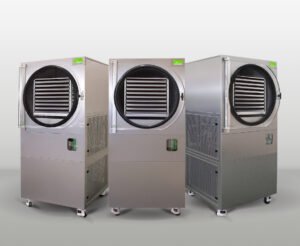Lyophilization has been around for decades, but in recent years, the technology has been evolving at a rapid pace. From smarter controls to greener energy use, the freeze-drying process is being reimagined to meet the needs of modern industries—and the planet.
Traditionally, lyophilization is a time-intensive process. Primary drying alone can take many hours, sometimes even days, depending on the product. This has long been a bottleneck for manufacturers. Now, new techniques are emerging to speed things up without compromising product quality. Advanced sensors can monitor temperature and pressure with extreme precision, adjusting conditions in real time to optimize sublimation. This reduces drying time, lowers energy costs, and increases production capacity.
Energy efficiency is another focus. While lyophilization is gentler than heat-based drying, it does consume significant energy for freezing and maintaining a vacuum. Engineers are now exploring closed-loop refrigeration systems, heat recovery methods, and more efficient vacuum pumps to minimize environmental impact. In some facilities, renewable energy sources are powering freeze-drying operations, making the process more sustainable from start to finish.
Another exciting development is continuous lyophilization. Unlike traditional batch processing—where products are loaded, frozen, dried, and unloaded in large groups—continuous systems allow for a steady flow of product through the freeze-dryer. This not only improves efficiency but also offers greater consistency, making it ideal for high-volume production of pharmaceuticals and food products.

In the pharmaceutical sector, miniaturized and modular lyophilizers are enabling small-batch production for personalized medicine. These compact systems can be placed closer to the point of use—such as hospital pharmacies—reducing the need for long-distance shipping and allowing for on-demand preparation of sensitive drugs.
Automation is also transforming quality control. Modern lyophilization lines often integrate with AI-driven analytics to predict drying endpoints, detect deviations, and even forecast maintenance needs. This level of control reduces human error, enhances product stability, and ensures that every batch meets strict safety standards.
Packaging innovations are keeping pace, too. Some freeze-dried products are now processed directly in their final containers—whether that’s a pharmaceutical vial, a food pouch, or a cosmetic capsule. This “in-container” approach prevents contamination, simplifies handling, and improves shelf life.
Looking ahead, the combination of faster cycles, lower energy use, and smarter monitoring is making lyophilization more accessible to smaller businesses and emerging markets. What was once a high-cost, specialized process is steadily becoming a more versatile tool for preserving quality across countless industries.
Freeze-drying will always be about protecting what’s valuable—be it nutrients, medicine, or delicate biological material. But thanks to ongoing innovation, it’s also becoming faster, greener, and more adaptable than ever before.